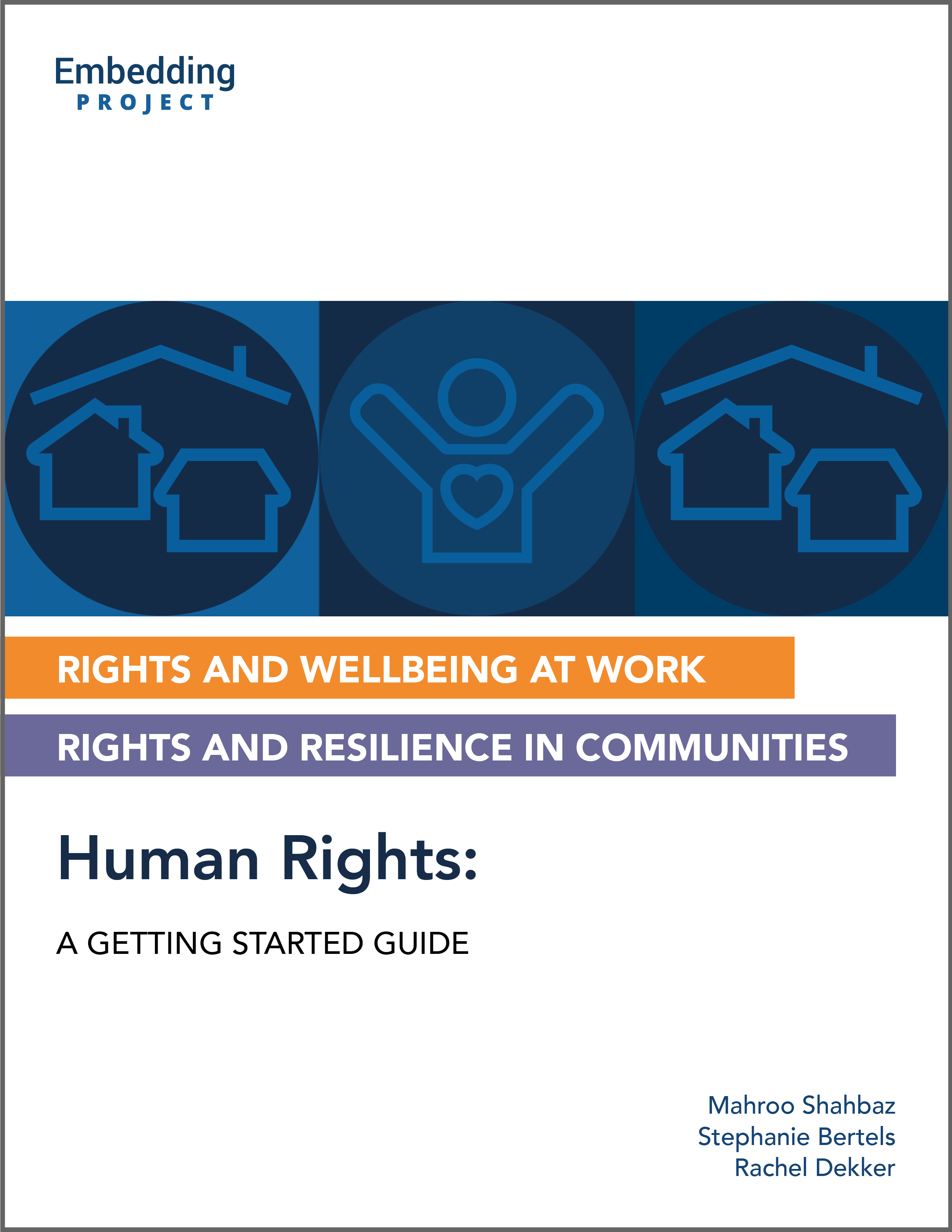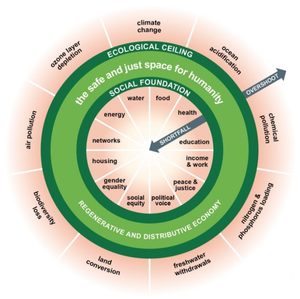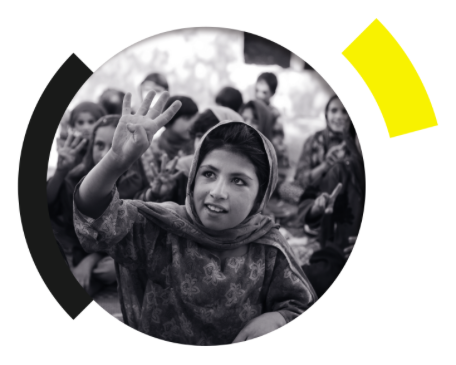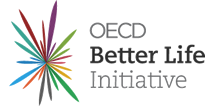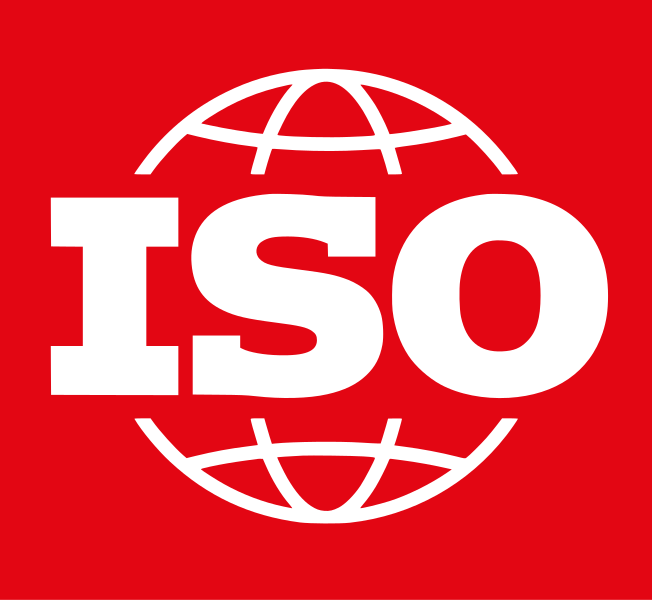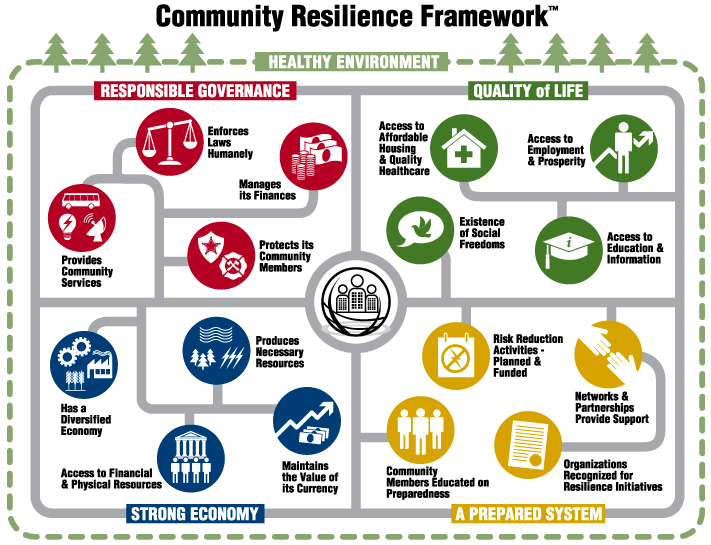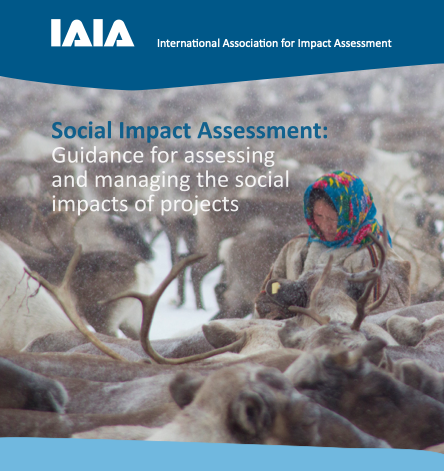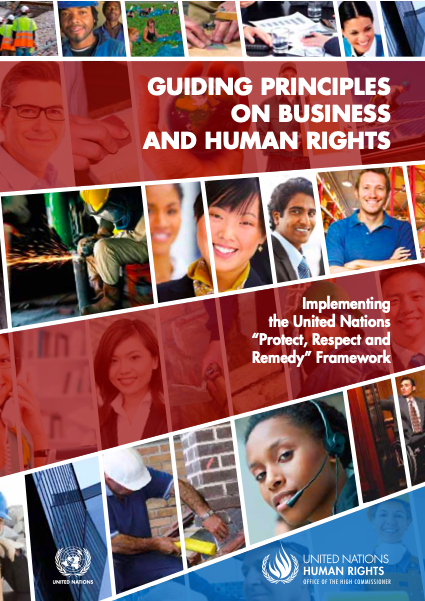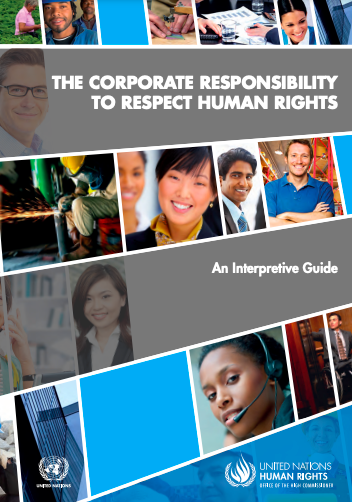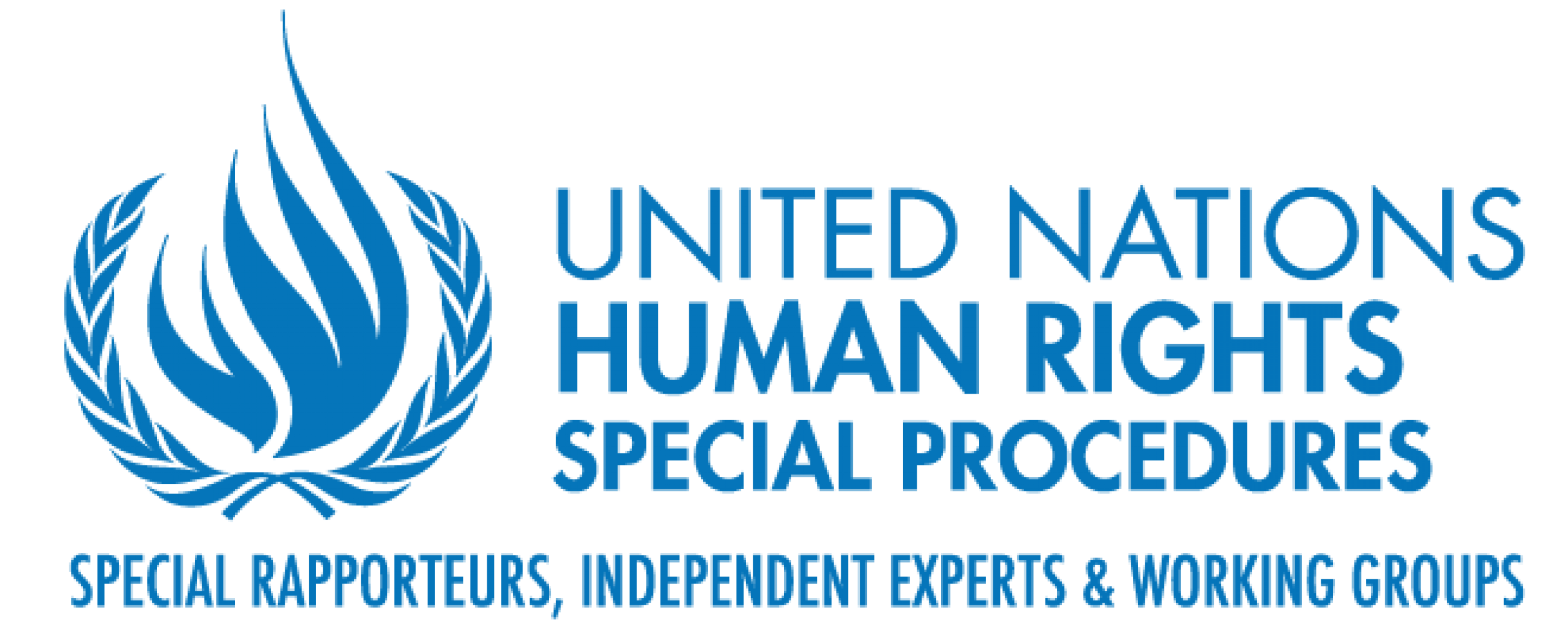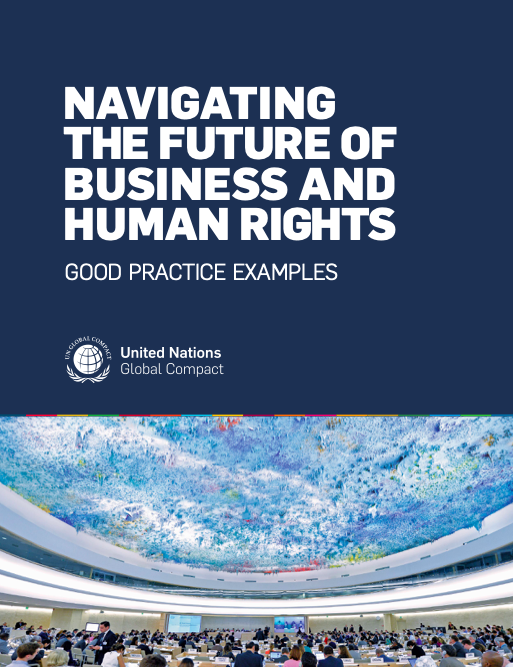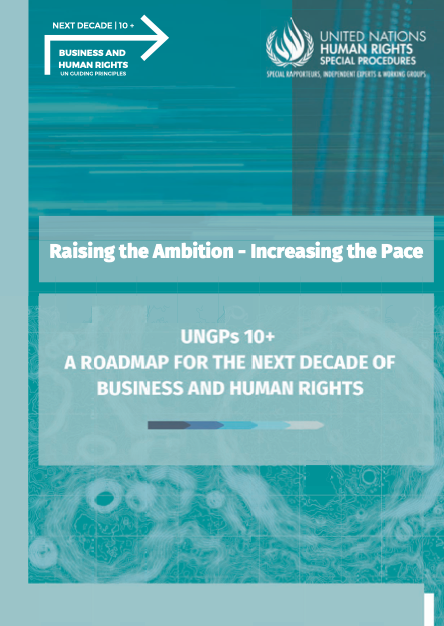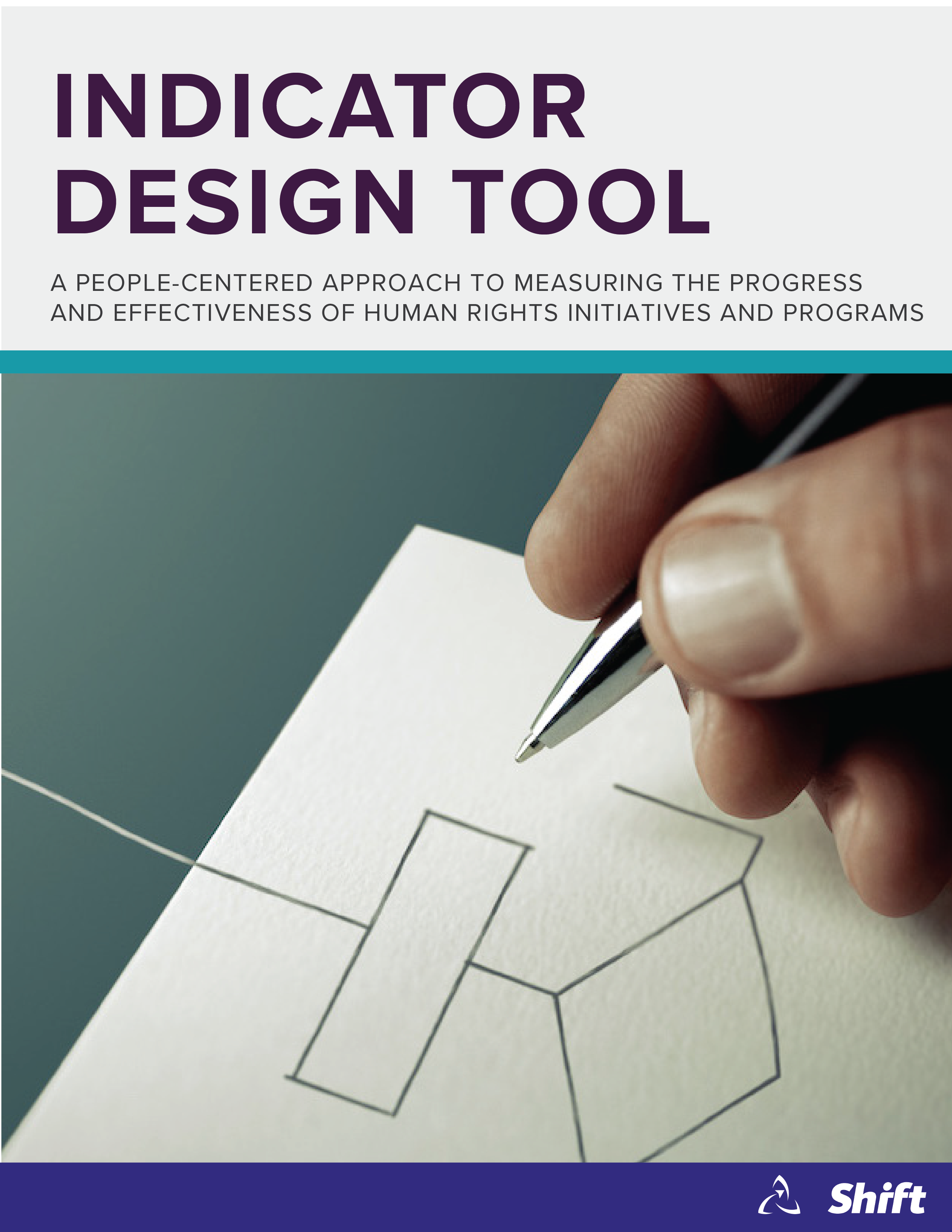General Resources
Description
This includes introductory resources and reference materials to help acquaint you with rights and resilience in communities.
Share this Subissue on:LinkedIn
Resources
Getting Started Guide
Human Rights: A Getting Started Guide
Human rights ensure that everyone can live a life of dignity and respect, without discrimination or deprivation. The full set of rights cover a broad range of topics relevant to business operations and relations. This Human Rights: A Getting Started Guide takes a holistic look at the topic of human rights and aims to support your company in building the foundation for managing human rights risks across your organisation and business relationships.
Community Resilience
The right to a clean, healthy, and sustainable environment
In August 2022, the United Nations General Assembly passed a resolution recognising the right to a clean, healthy, and sustainable environment as a human right. States, international organisations, businesses, and other stakeholders have a responsibility to “scale up efforts” to ensure a clean, healthy, and sustainable environment for all.
Understanding Community Resilience
The success of a company is directly linked to the resilience of the communities where it operates, as well as the resilience of the communities of its workers, its suppliers, and its customers. Increasingly, communities around the world are starting to contemplate their resilience and long-term sustainability. As a result, companies are expected to account for their impacts on community resilience. This guide will help you to understand why community resilience matters, how communities are beginning to approach resilience, and how your company can explore its role in fostering community resilience.
Partnering for Community Resilience: South African Case Studies
Proactive companies are recognising the strategic relevance of community resilience to their short- and long-term success. Community resilience is a positive dynamic between social, economic, and ecological systems that ensures community wellbeing and effective responses to shocks and disruptions, such as fires, droughts, or economic crises. This guide shares five in-depth case studies of companies engaging in partnerships for community resilience in South Africa. We distil the key lessons from these case studies for corporate managers who are planning or implementing partnerships for community resilience.
The Social Foundation: 'A Safe and Just Place for Humanity'
Kate Raworth's “Doughnut” model is a key framework for understanding sustainability context. Building on the planetary boundaries framework as a 'ceiling', it adds social foundations as a 'floor' and underlines the need to operate in the space between. The social foundation is made up of 11 boundaries that draw attention to communities needing access to basic resources to fulfill their human needs. This access needs to be achieved in a way that does not place undue stress on the earth's resources. The framework is based on the premise that we should be striving to build and maintain social foundations while staying within planetary boundaries.
Community Resilience: Why It Matters to Companies and 3 Things Your Company Can Do
The increasing pressure on companies to account for their impacts on the environment and on communities has been hard to miss. And many companies are making an effort to “do good” in the community, but they are often unsure how best to go about it. This blog post helps companies to figure out how they can contribute.
Social & Human Capital Protocol
Developed by WBCSD and launched by the Capitals Coalition, the Social & Human Capital Protocol is an excellent starting point for recognising and leveraging people and relationships as drivers for sustainable growth. Divided into four steps (Frame, Scope, Measure & Value, and Apply), the Protocol aims to clarify best practices, boost the positive impacts of business, and improve business credibility by integrating the consideration of social impacts and dependencies into performance management and decision-making. The Social & Human Capital Coalition has also developed case studies, sector guides, and a toolkit to complement the Protocol.
Applying resilience thinking
Based on the book "Principles for Building Resilience: Sustaining Ecosystem Services in Social-Ecological Systems," this short article introduces seven principles that can help you to better understand and practically apply resilience thinking within your organisation's decision-making.
City Resilience Framework
This report from Arup International Development and the Rockefeller Foundation introduces a framework for articulating city resilience, and was used to create the City Resilience Index. This report was informed by literature, case studies, and fieldwork, and it introduces a range of dimensions, indicators, and goals that will help you to understand the qualities of city resilience and recognise the types of actions that will advance city resilience.
City Resilience Index
Developed by Arup and supported by The Rockefeller Foundation, this tool helps users to understand the challenges of assessed cities in a systematic way. The tool allows you to carry out a resilience assessment of your city and generate a resilience profile; view and understand ready-made resilience profiles for various cities around the world; and explore solutions that are currently advancing the resilience of cities. This tool will help you to determine the baseline resilience of cities related to your present and future operations, value chain, and strategy, and will help you to measure progress.
OECD Better Life Initiative: Measuring well-being and progress
The OECD Better Life Initiative can help you to build a more comprehensive and nuanced understanding of how peoples lives are improving or degrading in regions around the world, as well as the types of policies and actions that can help to improve the lives of people in communities. At a glance, the Better Life Initiative has created excellent resources - such as their How's Life? report, Better Life Index, and comprehensive surveys - centered around the key themes of reporting, communicating, understanding, developing, building, and adapting. These resources can provide insights into quality-of-life factors that impact wellness; material conditions that are shaping people's economic options; and compare statistics between OECD and partner countries.
Healthy Social Environments Framework
This is an excellent framework for building your understanding of the social environment, which is the underlying social, cultural, and economic context within which communities live, work, and play. It introduces a matrix of core social environment features, core values, tools & facilitators, and outcome categories to highlight the inextricable and mutually-reinforcing connections within social environments. This user-friendly tool can help you with informing, influencing, and making community planning decisions, and can be used to initiate and organise conversations about social connections in communities, as well as to frame and organise presentations, discussions, and proposals on the subject.
Sustainable cities and communities - Indicators for city services and quality of life
ISO 37120 provides definitions and methodologies for a set of sustainable city indicators, and will help you to determine baselines for how cities may steer and deliver services and improve quality of life. If you are looking to contribute to city service performance and to improve the livability of the spaces in which your business operates, this standard is a good place to begin. The standard addresses a range of factor that maintain and advance the resilience of cities, including economics, education, health, recreation, shelter, transportation, and . For each of these factors it provides data and calculations that can be used to measure performance, allow for comparisons between cities, and to communicate best practices.
Sustainable cities and communities - Indicators for resilient cities
ISO 37123 provides definitions and methodologies for a set of sustainable city indicators, and will help you to determine baselines for how cities may prepare for, recover from, and adapt to shocks and stresses. If you are looking to contribute to the resilience of the spaces in which your business operates, this standard is a good place to begin. The standard addresses a range of factor that maintain and advance the resilience of cities, including education, health, safety, energy capacity, climate change adaptation, and infrastructure finance. For each of these factors it provides data and calculations that can be used to forecast emergency preparedness.
Tackling inequality: An agenda for business action
This flagship report from WBCSD can help you understand why growing inequality is a systemic risk to business and how businesses can address it. Structured into three parts, the report lays out why action on inequality is needed and why it is in the interest of businesses to take action. The second part outlines ten actions businesses can take; for each action, the report explains what the action entails, outlines the business case, and provides many real-world examples. The third part provides a transformation framework to help your business get started in applying the actions covered within your business context. This wide-ranging and detailed report contains insights that will be widely applicable across your organisation, including sustainability, supply chain, HR, finance, and legal departments.
ICOR: Community Resilience Frameworks
The ICOR Resilient Community Framework encourages taking a "systems" view to community resilience, with each system contributing to a greater whole. It asserts that there are five primary systems upon which each community functions, with each contributing to the overall resilience or vulnerability of the community: 1) a healthy environment, 2) a responsible government, 3) a strong economy, 4) preparedness for risks and disasters, and 5) quality of life. This is a good resource for helping you to understand the intersections and feedback loops between these facets of resilient communities.
Social Impact Assessment: Guidance for assessing and managing the impacts of projects
This guide from the International Association for Impact Assessment can help you to understand what is expected in good practice social impact assessment and social impact management processes, especially in relation to project development. It defines and explains social impacts, explores the business case and key considerations, and identifies the phases and tasks of social impact assessments.
Social Impact across the Built Environment: Prioritising people throughout the building life cycle
This report from the World Green Building Council and others can help you better understand the full range of social impacts related to the life cycle of buildings. Mirroring the concept of Scope 1, 2, and 3 emissions used to measure greenhouse gases, this report defines four scopes for the built environment that can be used to identify and assess social impacts. Scope 0 covers your internal practices, Scope 1 covers a building’s users, Scope 2 covers the surrounding community, and Scope 3 covers the construction supply chain. It also highlights a 5-step process for addressing issues identified in the Scopes, as well as case studies and a list of relevant resources. The scoping framework presented will be most useful to capital projects, real estate, and facilities teams, or anyone involved in developing or managing buildings.
The Future of the Care Economy
This white paper from the Global Future Council can help you to better understand the care economy, its importance to societal and economic resilience, and the case for making strategic investments that advance it. The paper explains the concept of the care economy and the ways in which care is critical to addressing longstanding inequities; provides a snapshot of the current state of the care economy; proposes a framework for enhancing care systems; and highlights practices and key success factors that can reshape structures of care.
The Social Justice Guide for Business: Moving Beyond Crisis to Action
This guide from BSR’s Center for Business & Social Justice can help you understand why addressing social issues is a business imperative. The first section identifies six overarching forms of corporate engagement on social issues and makes the argument that current engagement is mostly voluntary and limited to win-wins. The second section explains an alternate approach to corporate social justice, how it is different from business as usual, and how it can be integrated into your business strategy. The third section presents a tool outlining common barriers companies face to advancing social justice, along with tactics to overcome them. This guide will be most useful to business leaders, sustainability practitioners, or anyone involved in addressing social issues.
Multistakeholder approaches to socio-economic transitions in mining
This comprehensive handbook from the International Council on Metals and Mining presents nine multi-stakeholder approaches that mining companies and external stakeholders can apply to support socio-economic transitions (especially to a post-mining economy) and build community resilience. The handbook explores the core factors that influence the success of socio-economic transitions; the value of multi-stakeholder approaches, the roles mining companies can play, and what makes these approaches effective; nine distinct types of multi-stakeholder approaches, including post-mining joint ventures, collaborative regional planning processes, regeneration/development coalitions, and monitoring committees; illustrative cast studies; and eleven practical tools to support the application of these approaches in real-world settings.
Human Rights
UN Guiding Principles on Business and Human Rights
The UN Guiding Principles on Business and Human Rights, also known as the “Protect, Respect, and Remedy Framework,” set out 31 principles for states and companies to prevent, address, and remedy human rights abuses committed in business operations and the communities around them. The framework is founded on three pillars: the state's duty to protect human rights; the responsibility of businesses to respect human rights; and access to remedy for victims of business-related abuses. This document is a foundational piece for companies on how to respect and advance worker and community human rights.
UN Guiding Principles Reporting Framework
This reporting framework - and the associated guidance documents from Shift and Mazars - puts corporate reporting on human rights into straightforward language. The framework features a short series of questions to evaluate maturity and progress; implementation guidance; and assurance guidance, which is intended to support internal auditors in assuring companies' human rights performance and external auditors in assuring human rights reporting. These resources will be most useful to sustainability, compliance, and legal teams.
The Corporate Responsibility to Respect Human Rights: An Interpretive Guide
This companion guide to the UN Guiding Principles provides additional background information, interpretation, and explanation of the UNGPs, to help ensure companies have a full understanding of the objectives and intent of the principles.
The Universal Declaration of Human Rights
This milestone document in the history of human rights was proclaimed by the United Nations General Assembly in 1948 as a common standard of achievements for all peoples and all nations. The declaration sets out fundamental human rights to be universally protected, and is widely recognised as inspiring - or making space for - the adoption of more than seventy global and regional human rights treaties.
The International Bill of Human Rights
The International Bill of Human Rights was created to advance the fundamental freedoms and to protect the basic human rights of all people. It is comprised of the Universal Declaration of Human Rights and two international treaties: the International Covenant on Economic, Social and Cultural Rights, and the International Covenant on Civil and Political Rights. These covenants identify the responsibilities placed on nation states to respect, protect, and fulfill those rights.
Corporate Human Rights Benchmark
The Corporate Human Rights Benchmark (CHRB) assesses the corporate human rights policies, governance, processes, due diligence, remediation, and transparency of large, publicly traded companies, as well as their responses to allegations of human rights abuses. The related sector methodologies currently cover the apparel, automotive manufacturing, extractives, food and agricultural products, and ICT manufacturing sectors, but provide helpful insights into what’s considered leading practice no matter what sector your company operates in.
Business & Human Rights Resource Centre
The Business & Human Rights Resource Centre is an excellent resource for advancing the transparency of your company's human rights-related activities. This global business and human rights knowledge hub provides a wide range of briefings, reports, and the latest news and assessments on key human rights issues and explains their impacts on peoples and business. Their Resource Centre digital platform features company pages and dashboards which highlight allegations for over 20,000 companies and includes financial information, key data points based on corporate policies, and scores from prominent civil society benchmarks. They also track and highlight company responses to allegations of misconduct in their Company Response Mechanism.
Social Benchmark
This first ever Social Benchmark from the World Benchmarking Alliance assesses and ranks the world’s 2,000 most influential companies on their responsibility to respect human rights, provide decent work, and act ethically. These companies were assessed against the World Benchmarking Alliance's Social Transformation Framework, and the results reveal that there are significant gaps and areas that companies urgently need to progress on. The Benchmark provides key findings on a range of related topics, including engagement with affected stakeholders; due diligence; commitment to living wages; and lobbying activities. The platform provides a detailed insights report, and all of the Benchmark's results and data are publicly available.
Corporate human rights due diligence – Getting started, emerging practices, tools and resources
This report by the Working Group on Business and Human Rights focuses on emerging and leading approaches for corporate human rights due diligence and includes learnings and practical insights, recommended actions, good practice approaches, factors that enable change, and a range of tools and resources for those tasked with human rights due diligence oversight or implementation.
Human Rights Impact Assessment Guidance Toolbox
This toolkit from the Danish Institute for Human Rights offers useful guidance and tools for human rights impact assessment (HRIAs) as part of company due diligence obligations, whether your role is to commission, conduct, or review such projects. The primary focus of the toolbox is on large-scale business projects, but can be adapted for other contexts or business activities. It includes guidance for each phase of the process, for stakeholder engagement, and offers relevant case studies and resources.
Navigating the Future of Business and Human Rights: Good Practice Examples
This resource looks at emergent and salient issues and will help bring you up to speed on the future of business and human rights. It includes an overview of trends and good practice in relation to seven key themes: the future of work, climate justice, effective remedy and grievance mechanisms, migrant rights, gender equality, due diligence, and tackling working poverty. It also highlights examples of companies from around the world implementing practical solutions to human rights-related challenges.
UNGPs 10+ A Roadmap For The Next Decade of Business and Human Rights
Known as the “UNGPs 10+” or “next decade BHR” project, This guide from the Working Group on Business and Human Rights was created to take stock of the implementation of the UN Guiding Principles (UNGPs) and chart a course for action in the decade ahead. The guide visit eight action areas, including business responsibility to respect, access to remedy, more and better stakeholder engagement, and more and better tracking of progress. Each action area includes insights and findings, outcomes needed for the next decade, and illustrative actions for supporting progress towards the goal. This guide will help you to build your understanding for human rights topics of global concern so that you may better prioritise and allocate your resources for creating positive change.
Indicator Design Tool
Once you have identified and prioritised your human rights risks, you may need help to design an approach to addressing the issue. Shift has created the Indicator Design Tool to support you with developing evidence-based targets and indicators that are focused on preventing, mitigating, and remediating human rights impacts. It employs a 7-step process that is divided into three stages: articulate strategy, account for context, and develop targets & indicators. An in-depth guide is complemented by a template work book.
International Human Rights Law: A Short History
The phrase "human rights" is a significant and weighty term that is used in both an abstract, philosophical sense and as a manifestation in law. This article provides a comprehensive, high-level explanation of how the international human rights law landscape came into creation and how it has evolved since then.
Global Rights Index 2025
The International Trade Union Confederation has created this index to help you better understand the status of worker rights and freedoms around the world. Their flagship report provides ratings for each nation on the degree of respect for workers' rights. It highlights the countries and regions where rights are deteriorating, provides an overview of global trends for workers, and explains the impact of conflicts on workers' rights.
The platform also provides key news items, reports, statements, and other types of information that can help you to better understand the status of fundamental rights and freedoms around the globe.
